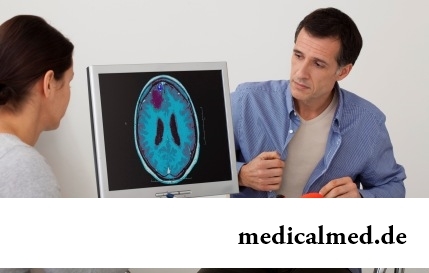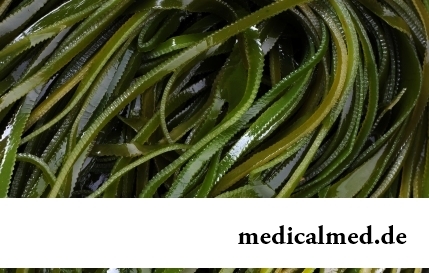





5 myths about X-ray inspections
Radiological methods of a research are applied in medicine more than hundred years, and thanks to them millions of lives were saved. In many cases without X-ray it is impossible to make exact idea of a condition of bodies and fabrics, it is correct to make the diagnosis. Nevertheless, many myths about researches such continue to exist. Let's consider the most widespread of them.

1. X-ray is deadly
X-ray, passing through a body of the person, can cause:
- Development of temporary deviations from optimum composition of blood;
- Change of structure of proteinaceous molecules;
- Senilism of fabrics;
- Failures of process of normal maturing of cells;
- Pathological regeneration of separate cells.
The probability of emergence of any negative processes directly depends on the exposure dose received by the patient. For the majority of diagnostic radiological procedures these doses are extremely small. For example, at fluorographic inspection which is recommended to be undergone annually the person receives on average about 500 μSv (microsievert), and when carrying out a X-ray analysis of one tooth – only about 30 μSv. In view of that the dose in 50000 μSv received within a year, about any danger of death of radiological procedures out of the question officially is considered unhealthy.
2. X-ray is absolutely harmless
As it is not strange, antithetic is not absolutely right too. The heaviest from the point of view of an exposure dose are procedures of a computer tomography of abdominal organs (everyone – about 20000 μSv). In principle, several such researches made during the short period bear potential risk for health.
For this reason doctors, appointing radiological diagnosis, have to be guided by data of other researches and direct need, but not desire of patients.
3. X-ray provokes development of oncological diseases
Statistically, the probability of malignant regeneration of cells at the patients inspected by method of a computer tomography makes about 0,1% (one case on 1000 researches). For the most widespread procedures (such as chest X-ray) this risk makes 1 case on one million patients who passed a research.
4. X-ray has a set of contraindications
Radiological diagnostic methods have no actually medical contraindications. At purpose of inspection the doctor has to estimate need of holding a procedure and correlate its potential danger to a condition of the patient. The special attention is required by carrying out X-ray analyses to chest babies and future mothers. If there is an opportunity to use the method which is not connected with radiation (for example, ultrasonography), the doctor will surely give it preference.
5. After the research it is necessary to bring radiation out of an organism
According to most of physicians, no rehabilitation after radiological diagnosis is required. Influence to which the organism is exposed during the procedure is short-term, and the received exposure dose – minimum. Patients who nevertheless are afraid of negative effects should drink more liquid after inspection: it will help an organism to stabilize quickly a metabolism and to remove decomposition products.

Radiological diagnosis is widely applied at fight against internal diseases, various injuries, in oncological and ftiziatrichesky practice. As a rule, procedures are absolutely necessary: without them neither diagnosis, nor assessment of efficiency of treatment are impossible. At the same time similar methods are almost safe, are not traumatic and, in most cases, are comfortable for the patient.
The American scientists made experiments on mice and came to a conclusion that water-melon juice prevents development of atherosclerosis of vessels. One group of mice drank usual water, and the second – water-melon juice. As a result vessels of the second group were free from cholesteric plaques.

Phobia – the persuasive fear of a certain contents shown in a specific situation against the will of the person. Concepts of a phobia and fear...
Section: Articles about health
Each of us repeatedly noticed that the people having the same passport age are sometimes not similar on one-years at all. One at the age of 40-45 years already looks almost an old man, and another and in 60 is young, vigorous and full of life. The matter is that state нашег...
Section: Articles about health
Hemorrhoids – extremely widespread disease. Periodically arising inflammations and bleeding of hemorrhoidal nodes cause serious discomfort to nearly fifteen percent of adults. Meanwhile, having a clear idea of the reasons of an exacerbation of an illness and following rules of precaution, it is possible to reduce substantially sharpness of unpleasant feelings and to reduce progressing of a disease....
Section: Articles about health
Good appetite was always considered as a sign of good health. The correct operation of the mechanism which is responsible for the need for nutritious...
Section: Articles about health
The fatigue, sleep debt, disturbances of food, bad mood, vagaries of the weather – all these circumstances badly affect our appearance. Especially the person suffers: skin becomes flabby, loses healthy color, becomes covered by wrinkles, zones of hypostases and t appear...
Section: Articles about health
Visit of doctors – business not the most pleasant, and many people do not hurry to undergo necessary planned inspections. Such behavior is extremely thoughtless and improvident. Our health is necessary not only to us: wellbeing of darlings, children, grandsons and aged parents directly depends on as far as we are vigorous and able-bodied. Therefore in time to be inspected – a duty of any modern person. Specialists consider that 7 regular surveys and di are especially necessary for women...
Section: Articles about health
Each person has easy indispositions which he transfers "standing", trying not to ask for medical care. Argu...
Section: Articles about health
Residents of big cities quite often have a disease which is known as the syndrome of chronic fatigue (SCF) today. This illness affects the people belonging to various social and demographic groups and living on all continents. Most of all SHU to a podverzha...
Section: Articles about health
Is told about advantage of domestic animals for development of the child much. But many parents nevertheless do not hurry to bring pets as are afraid that they can do harm to health of children. What troubles can really trap kids and how to make joint life of a family and domestic animals comfortable and safe?...
Section: Articles about health
The way of life of people promptly changes from year to year: if about ten years ago the personal computer was not in each family...
Section: Articles about health
Antibiotics - - it is possible to call the chemical compounds suppressing growth of bacteria the break in the field of medicine which allowed to save mankind from many diseases incurable earlier: tuberculosis, plague, syphilis and many others. A contribution of drugs to rescue of people from...
Section: Articles about health
"Epilepsy" doctors made the diagnosis in antique times. Displays of an illness and pattern of its development are very well studied. However for nonspecialists this disease remains to not less mysterious, than in the ancient time. Many delusions are connected with epilepsy, and it sometimes very unpleasantly affects quality of life of patients and their relatives. In this article we will try to dispel the most known of similar myths....
Section: Articles about health
The summer of this year in Russia was very ambiguous. Regions suffered from a merciless heat, from pouring rains, the hail from time to time dropped out, then there was again a heat which alternated with rainfall again. Many people suffer from such sharp changes of weather. Even flu epidemics and a SARS were recorded....
Section: Articles about health
Physical activity is necessary for normal functioning of a human body. At a lack of the movement cease функц...
Section: Articles about health
Dietary supplements (dietary supplements) for the last decades were so thoroughly included into our life that, apparently, it is already impossible to find the person who at least once did not try them. At the same time, most of our compatriots have a vague idea about...
Section: Articles about health
On health of the person physicians know about salutary action of animals long ago. About 7 thousand years ago great Hippocrates recommended to the patients riding walks for strengthening of a nervous system and increase in vitality....
Section: Articles about health
People know that thermal sources have salutary force long ago. Treatment by natural waters is one and...
Section: Articles about health
Stroke (acute disorder of cerebral circulation) – one of the most widespread neurologic diseases. Annually in the world more than 6 million people die of this illness. From the survived patients about 80% become disabled people, and nearly a thirds from them впо...
Section: Articles about health
It would seem, to buy drugs in Moscow does not make a problem – a drugstore, and not one, is available for each resident of the capital within walking distance. And, nevertheless, Internet drugstores become more popular – what it is possible to explain such phenomenon with? Actually there is a lot of reasons and if to formulate them it is short, then the most suitable word will be - "conveniently". We suggest to get acquainted in more detail with pluses and minuses of online drugstores that buying drugs, not to make the wrong choice....
Section: Articles about health
Memory is an ability of the central nervous system to fix, keep and as necessary to reproduce information on knowledge...
Section: Articles about health
The majority of gynecologic diseases prove three main signs, each of which speaks about need of a visit to the gynecologist. Certainly, it is possible to establish the exact diagnosis only after inspection, but on the basis of some signs it is possible пр...
Section: Articles about health
Contrary to popular belief, the multiple sclerosis (MS) is not connected neither with sclerous changes of walls of vessels, nor with age forgetfulness and problems with concentration of attention. This disease has the autoimmune nature. Pathological process is expressed in degradation of nervous tissue and destruction of its enveloping layer - a myelin. Multiple damages of the central nervous system which are shown by decrease in sight, bystry fatigue, on become result of development of an illness...
Section: Articles about health
Almost each of us during life faced dissatisfaction with own body. At such moments, as a rule, we beginning...
Section: Articles about health
About influence of fasting days on an organism it is told much – both about advantages, and about shortcomings. It is considered that fasting day in the form of a short-term monodiet is useful, promoting effective removal of slags from an organism whereas irregular, it is excessive п...
Section: Articles about health
Impossibility to conceive the child – a trouble of many Russian families. During quite long time was considered that main "culprits" of troubles such are women. Modern physicians claim that the situation is different: about a half of failures in attempts of reproduction are connected with male infertility....
Section: Articles about health


